How to set up Stape Conversion Tracking plugin for WordPress
Updated Oct 9, 2025
1. Log into your WordPress Admin, and go to the plugins. Then, click Add New, search for GTM Server-Side, choose this plugin, and click Install now. Once installed, click Activate.
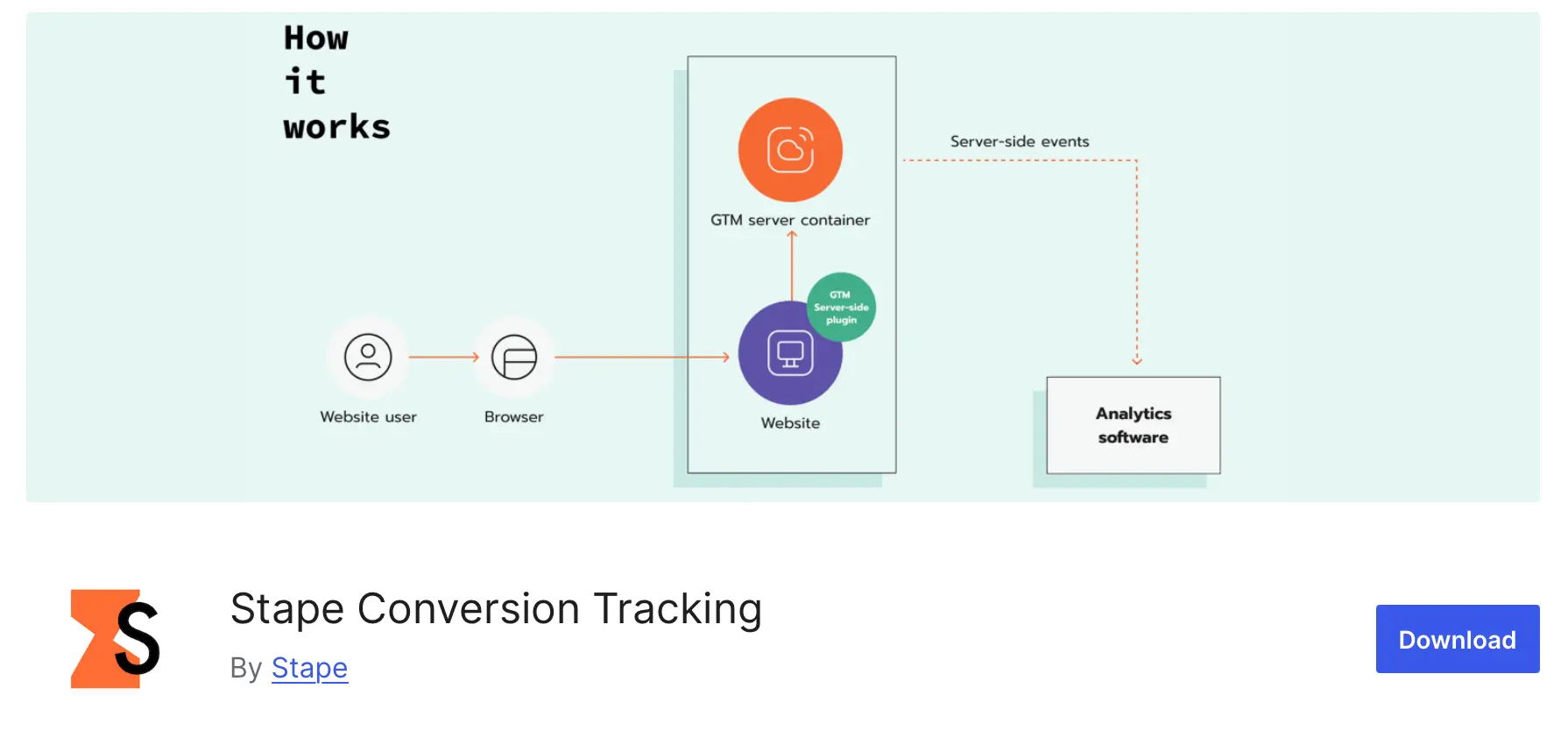
2. Create a Google Tag Manager Server container if you don’t have one. Go to https://tagmanager.google.com/ and choose the account where you want to create a container. Then, click Admin.
3. Under the container column, click +.

4. Type container name, choose Server and click Create.

5. On the install pop-up, choose Manually provision tagging server, copy your container config and paste it into any text editor. We will need it for the next steps.
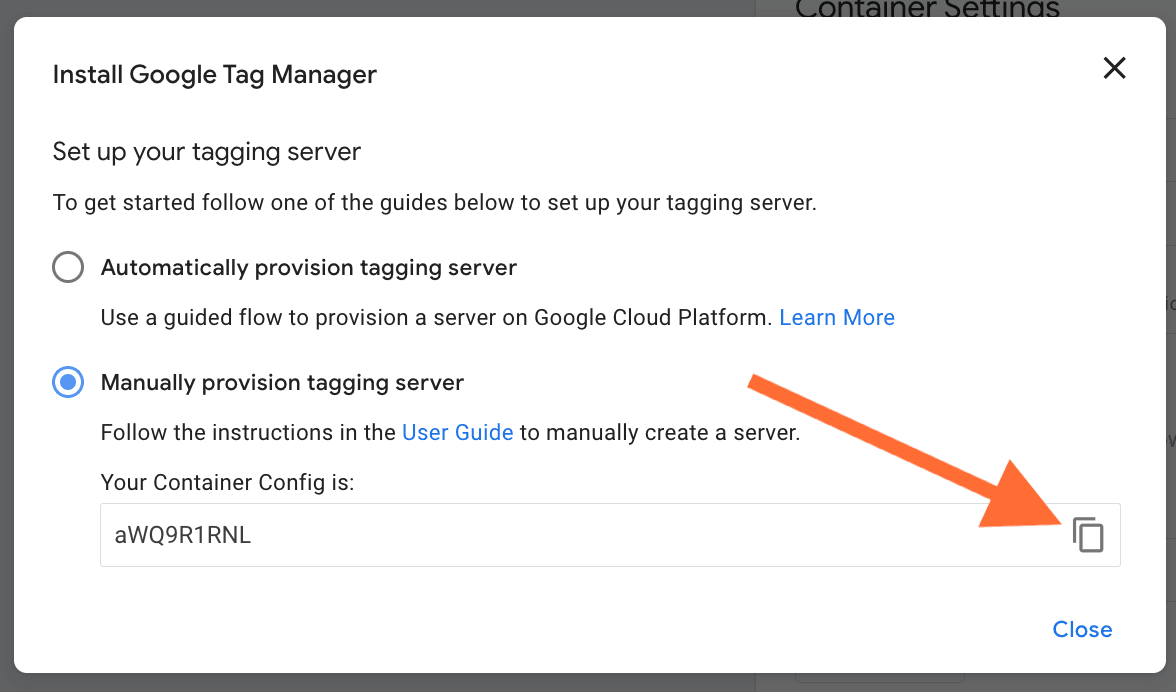
6. Create an account within our service here.
7. Once you receive the confirmation email and set your password, you need to create a container. Enter your container name and paste the container config that you copied from your Google Tag Manager Server Container. Then, click Create Container.

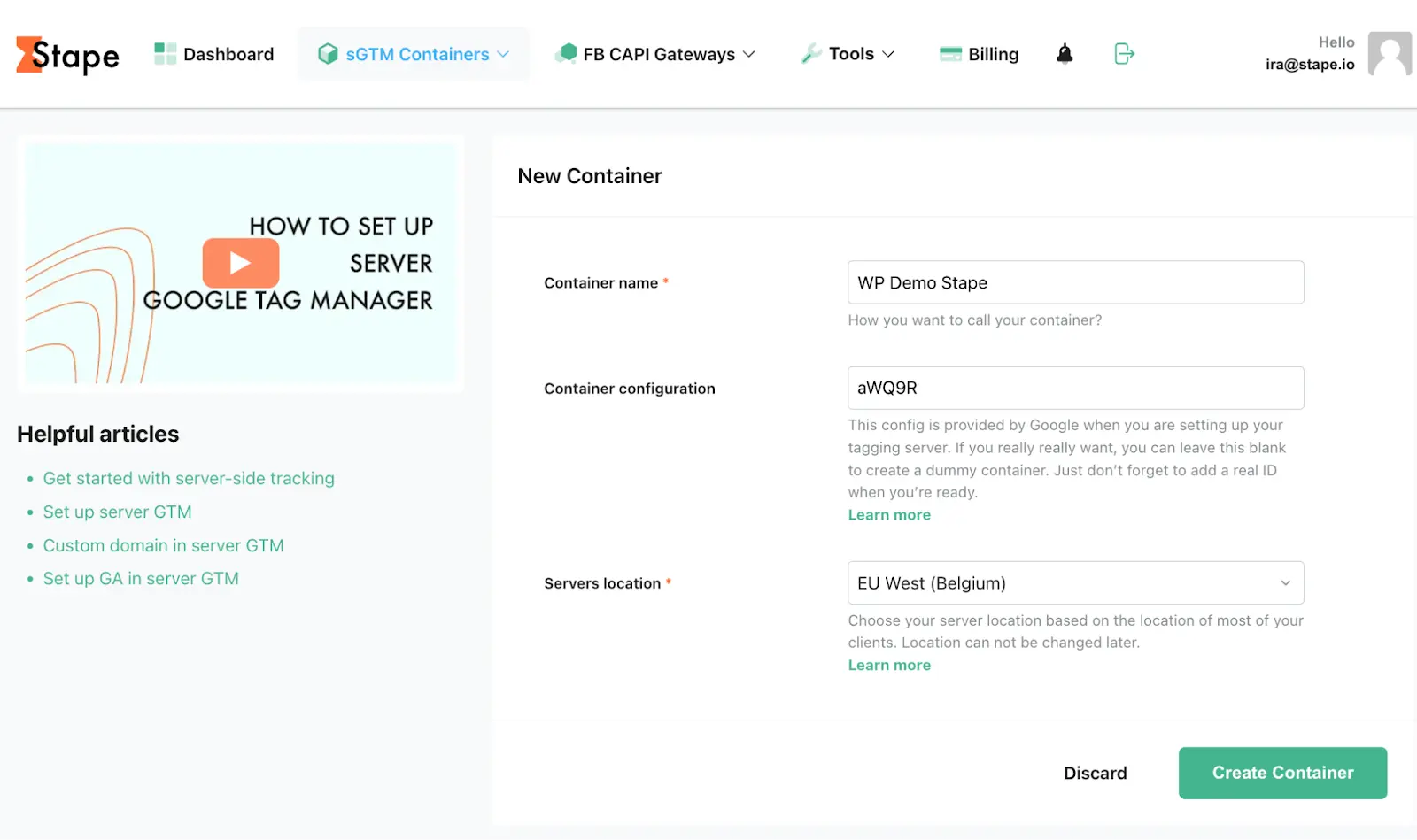
8. Once you click Create, you will see the status of your container, container config, and plan name. It takes around 5 minutes to deploy a server container. Reload the page to update the status. If the setup was done correctly, you should see the status Running.
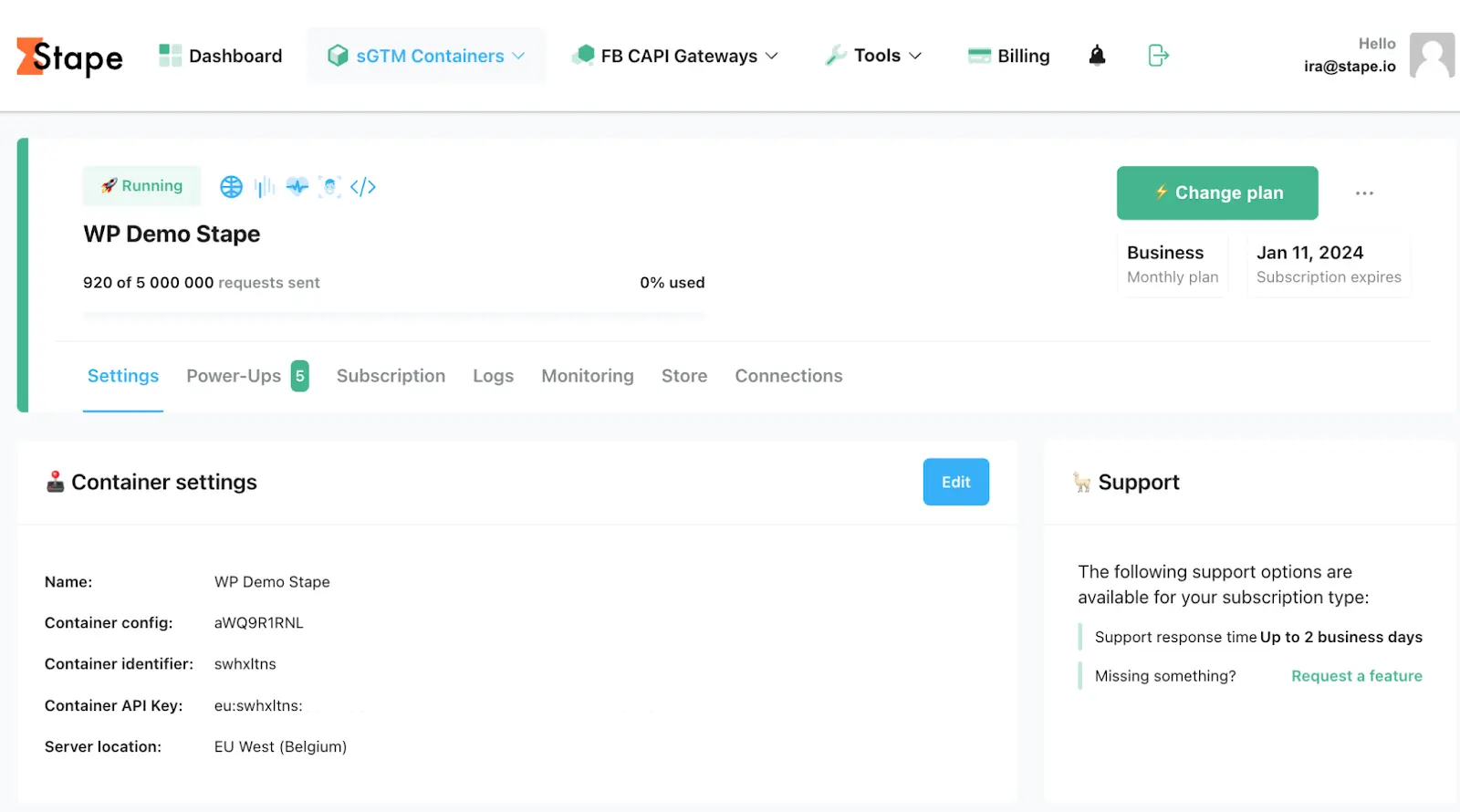
If you see “Error,” please check if you’ve copied and pasted the correct container configuration.
If the error repeats, please contact support.
9. Set up a tagging URL. Inside your Google Tag Manager, click admin, select container settings, and paste the domain URL that you see inside your container. Using a custom domain is highly recommended.
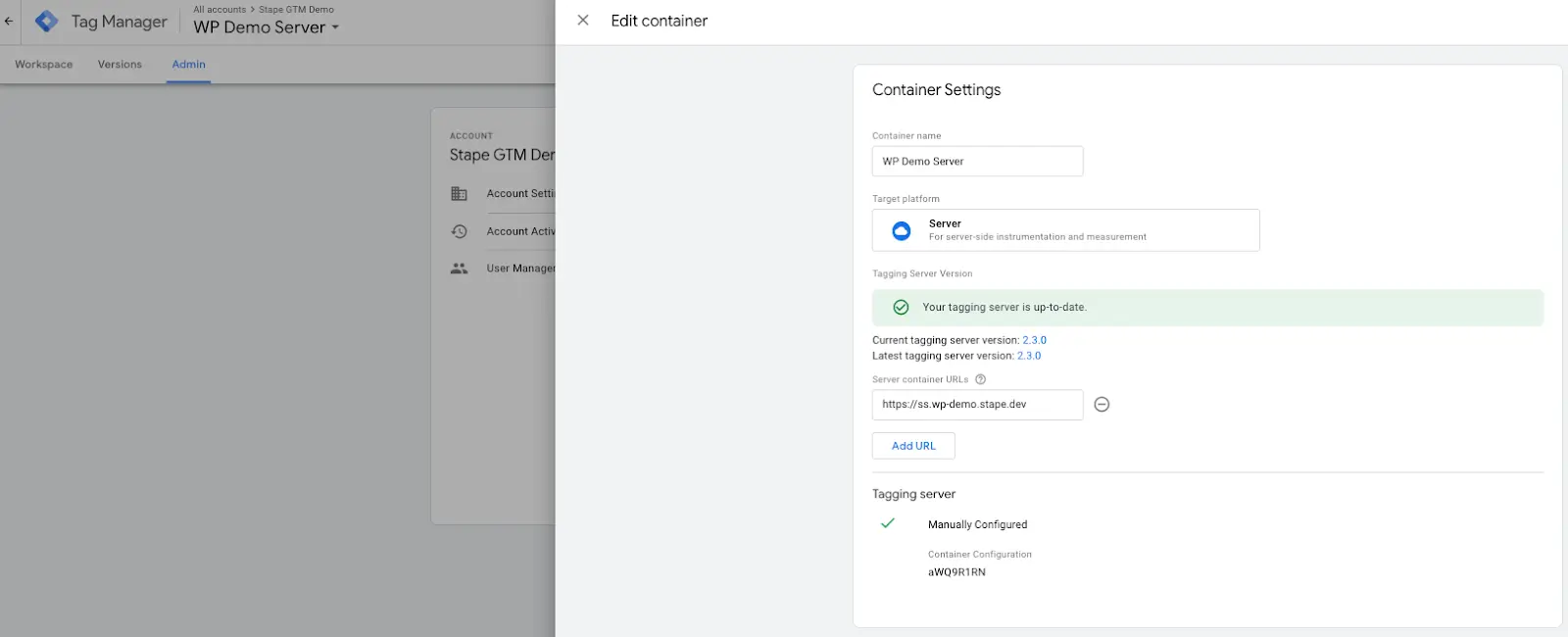
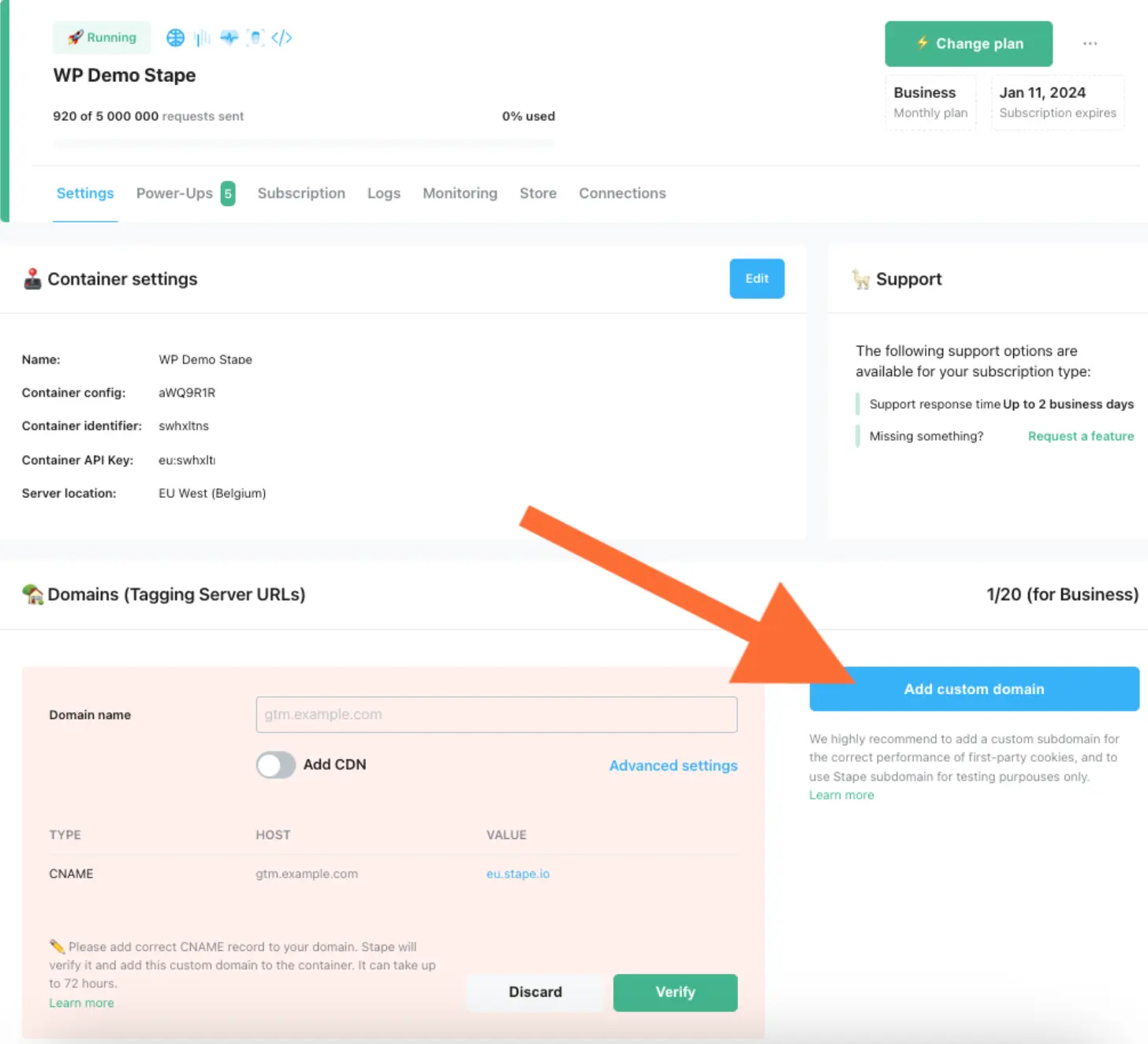
10. Open the GTM Server-Side plugin you installed in the first step and paste tagging URL inside the plugin settings. Then select if you want to add web GTM to all site pages or just add plugin functionality without adding GTM script (this option should be used in case you are using any other plugin that inserts GTM script on the site).
Next, add WEB Google Tag Manager ID, tagging server URL, and Stape container identifier if you want to use a Custom Loader. Select if you want to add data Layer events or send webhooks.
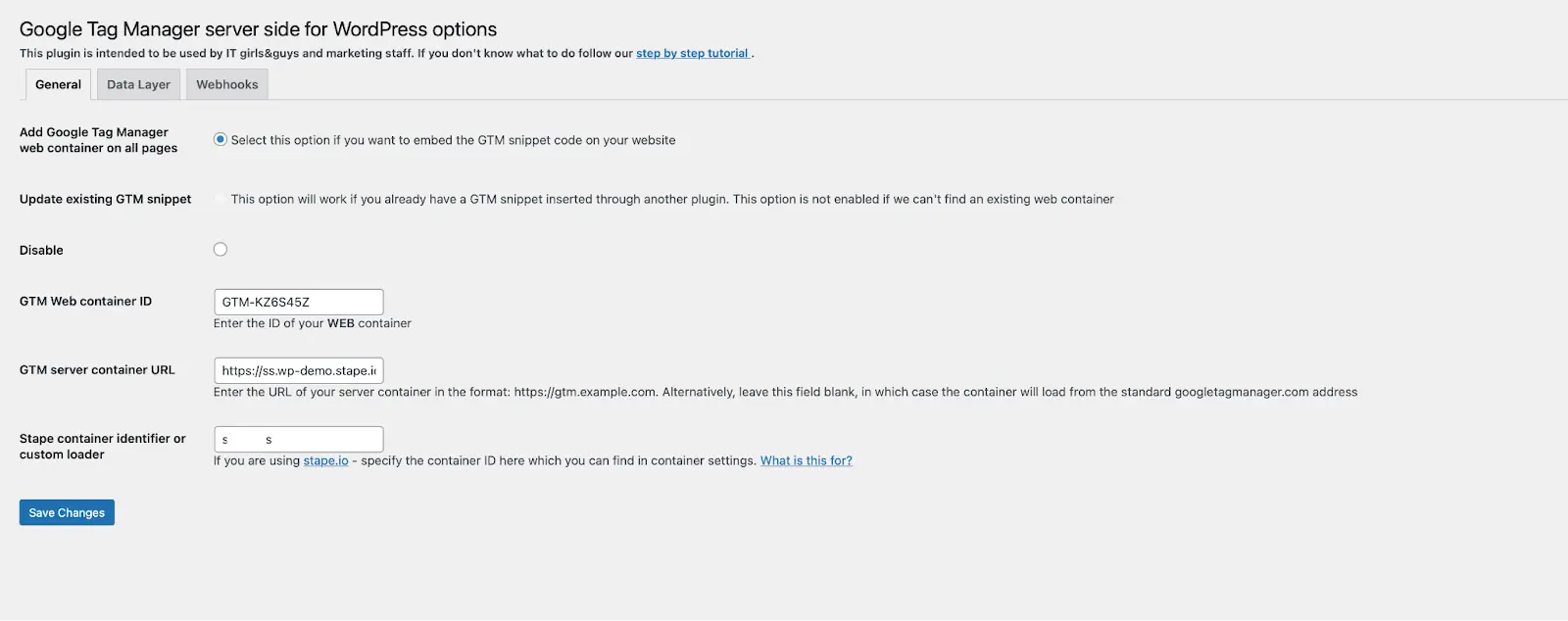
11. Save changes, open the console, and check that the web GTM script is served through the tagging server URL.
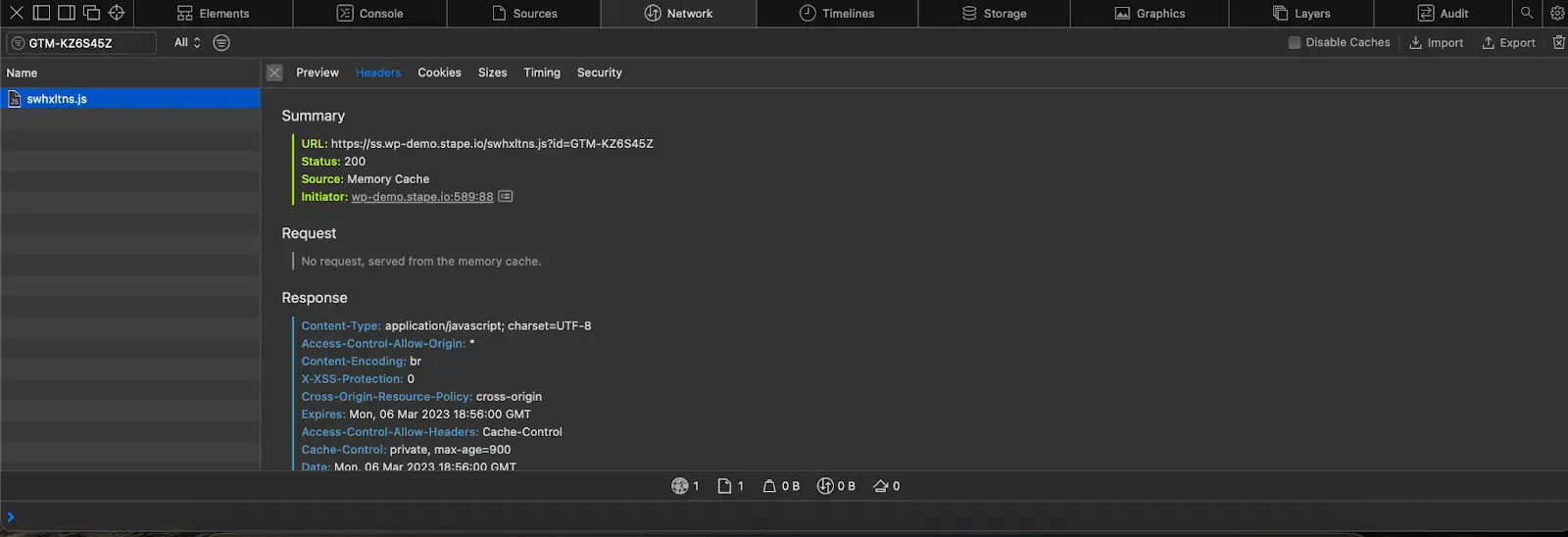
12. Once you have a server GTM container for the WordPress site up and running, you can start setting up server-side tagging for needed platforms. For example, we already have blog posts describing setting up server-side Google Analytics 4, Facebook, TikTok, Snapchat Conversions API, etc. You can also use Stape’s Setup Assistant to generate and automatically import templates into web and server GTM containers, tailored to your tracking requirements.
Comments